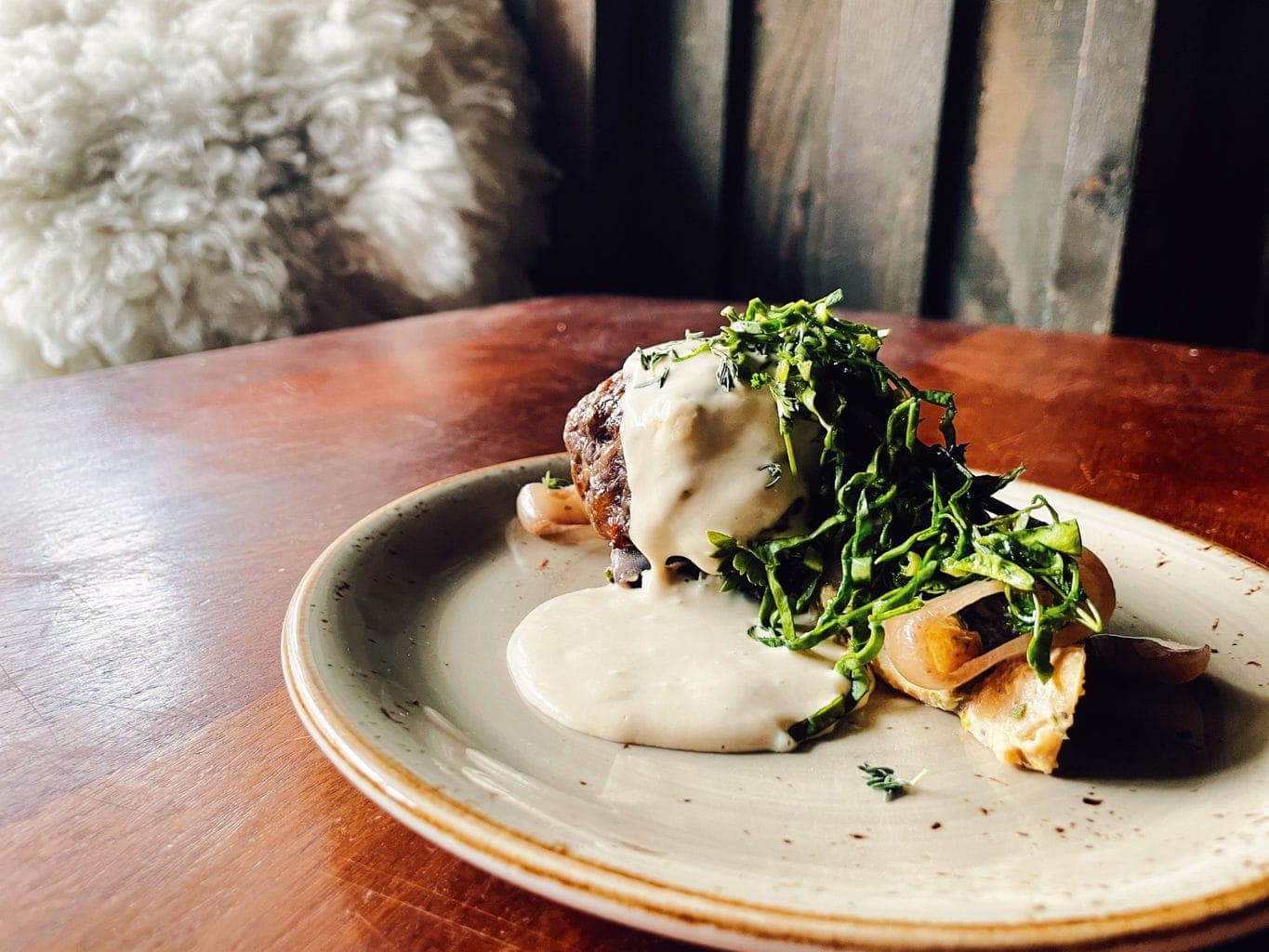
The most well-known and traditional kimchi for Koreans is made out of napa cabbage (won bok in Korean). That’s the kimchi that is always served in Korean restaurants.
For the next week or two, the Black Cat Farm will be selling napa cabbage at the Boulder Farmers’Market. Eric says that you can make good kimchi out of any vegetable in the mustard family (cruciferous vegetables like broccoli, brussels sprouts, and cauliflower, cabbages, and mustard plants like tatsoi). Still, this is your chance to make your own baechu kimchi (napa cabbage kimchi) and feel like a Korean.
Napa cabbage
Napa cabbage is so challenging to grow in the spring in Boulder County that it’s hard to fathom why Eric even tries. Even when he starts it at the beginning of the year, when it matures in late spring, it’s inclination is to flower and become bitter before he can harvest it.
Eric compares growing napa cabbage to building a house of cards in a windstorm. Any stress causes it to bolt (go to seed), so he dotes on all plants, making sure they are not crowded and are well-weeded. He mentioned something about speaking lovingly to them and reading bedtime stories but we’re not sure if we believe him. It’s a big farm and there’s a lot to do.
Growing napa cabbage is even worse in the fall because napa cabbage is the favorite food of grasshoppers. The grasshoppers have matured and become large by the time the napa cabbage starts taking off. Eric has had years where he planted acres of napa cabbage for fall harvest and didn’t harvest a single cabbage.
Despite it all, Eric hopes for the best and plants napa cabbage anyway because he loves it. And love is the deciding factor for a chef/restaurateur who farms as opposed to a farmer who can’t afford to grow a risky vegetable that may be unfamiliar to their customers.
Soon, Black Cat Farm-Table-Bistro will have a dish on the menu with napa cabbage that Eric says is fantastic: Fish wrapped in napa cabbage leaves with duck fat drizzled on top and truffle shavings.
Eric’s kimchi
Following are Eric’s guidelines for making kimchi. Rather than a precise recipe, it is an approximation.
Ingredients
2 heads of Napa cabbage, or the equivalent 4 pounds of another mustard family plant
1 bunch of Hinona Kabu Japanese turnips, daikon or any other turnips
1 head of garlic, cloves peeled and minced
1 spring onion
1/2 cup of *kosher salt
Fermented fish sauce or dried shrimp
Thai red chile paste, *Korean chile flakes (gochugaru), crushed Thai dried chiles
1 large and very clean non-reactive container to ferment the kimchi (no metal allowed except stainless steel)
1 large plastic ziploc bag
*Kosher salt is free of iodine and/or anti-caking agents, which can inhibit fermentation.
*You can reliably find Korean chile flakes at Korean grocery stores like HMart in Westminster and Aurora, Colorado.
1. Slice the vegetables very thinly, except for the garlic. For the napa cabbage or any other leafy mustard, this means slicing the leaves into thin strips.
2. Move the sliced vegetables into the bowl of a stand mixer with a dough hook or paddle attachment, add the salt, and mix until the vegetables start to give up liquid. Or, you can vigorously hand mix the mix in a large bowl.
3. Add the garlic, a tablespoon of fish sauce or 2 tablespoons of dried shrimp, and the chile peppers (to taste). For Thai chile paste, you could try a couple of tablespoons. Similarly, incrementally add the dried chile until you find the level of spiciness that suits you.
4. Thoroughly mix all ingredients.
5. Transfer the kimchi to the fermentation container, vigorously compressing it in the process.
6. Keep packing down the kimchi even after you have transferred it until the liquid that you are forcing out of the vegetables covers them.
7. Fill the plastic ziploc bag with water and seal.
8. Completely cover the surface of the vegetables with the ziploc bag. The bag will weigh down the vegetables and seal them off from air.
9. Leave the kimchi container out at room temperature (approximately 70 degrees).
10. At four days, start regularly tasting your kimchi. When it suits your taste (the longer it ferments, the more sour and savory it becomes), transfer the kimchi container to the refrigerator. The fermentation will then slow to the point that it is imperceptible.
Your kimchi should last in the refrigerator from 3-6 months.
**Photo by jqn (a flickr user) (http://flickr.com/photos/jqn/289049822/) [CC-BY-SA-2.0 (http://creativecommons.org/licenses/by-sa/2.0)], via Wikimedia Commons
